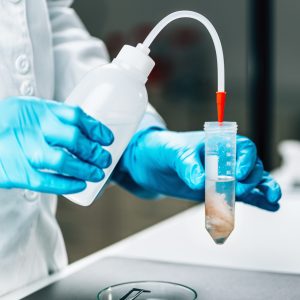Tips for Improving Your Water Quality at Home
 Your water quality at home impacts your health and the sustainability of your home. Poor indoor air quality and contaminated drinking water is a growing problem in homes today. Fortunately, there are ways you can improve your water quality at home. With some simple changes to your habits, you can reduce the concentrations of contaminants in drinking water and indoor air pollutants in your home. If you’re ready to take action for a healthier home, here are some tips for improving the quality of air and drinking water in your house.
Your water quality at home impacts your health and the sustainability of your home. Poor indoor air quality and contaminated drinking water is a growing problem in homes today. Fortunately, there are ways you can improve your water quality at home. With some simple changes to your habits, you can reduce the concentrations of contaminants in drinking water and indoor air pollutants in your home. If you’re ready to take action for a healthier home, here are some tips for improving the quality of air and drinking water in your house.
Change Out Old Water Filters
When you change out water filters, you can reduce the amount of contaminants in your water. Water filters act as a barrier between your water supply and your tap. They can capture contaminants such as chlorine, bacteria, heavy metals, and even odors and gases. When your water filter is full of contaminants, it can’t do its job effectively, which means you could be drinking water with higher concentrations of contaminants. Check your water filter’s frequency and replace it with a new one when you have less than 10 percent of the filter’s capacity left. You can also install a multi-stage filtration system in your home to reduce the amount of contaminants in your water even more.
Add A Carbon Filter To Your Shower
You can reduce the amount of harmful contaminants in your shower water by installing a carbon filter. As water travels through the filter, carbon removes chlorine, chemicals, and other contaminants. It can also help reduce the amount of odors in your home. As your carbon filter gets dirty over time, it loses its effectiveness. You can clean your filter every three to six months to keep it working properly. You can also install a water conditioning system in your shower to reduce the amount of contaminants in your water even more.
Install an Ultra Violet Water Purifier
If you’ve got a high-quality water purifier, it can reduce the amount of contaminants in your water significantly. The higher the quality of your water purifier, the more contaminants it can remove from your water. Keep in mind that the quality of water purifiers can vary widely, so it’s important to purchase a high-quality water purifier. You can install a high-quality water purifier on your faucet or in your water storage tank. As your water purifier filters the water through it, it removes contaminants and impurities from the water. You can also choose to purchase a whole-house water filtration system. These systems are more permanent and integrated into your entire water system, so they remove more contaminants from your water than a faucet-mounted filter.
Seal Off-Flow Vent Pipes
If you’ve got a dryer, furnace, or water heater in your home, it may be leaking contaminants into the air in your home. You can seal off-flow vent pipes to prevent this from happening. There are many ways you can do this. You can purchase a kit from your hardware store, or you can create your own with some DIY ingenuity. You can also use a sealant or tape on the joints where the pipes meet. Make sure that you clean the pipes before sealing them off, as this will make your DIY job easier.
Change The Batteries In Your Air Humidifier
Air humidifiers can help to improve your indoor air quality, but only if you clean and maintain them properly. The best way to keep your humidifier clean is to change the batteries in it every six months. This may sound like an odd thing to do, but dirty humidifier filters can trap contaminants in the air in your home. Dirty filters can also reduce the effectiveness of your humidifier by reducing the amount of humidity in the air. If your humidifier doesn’t have a water reservoir, you can also clean the inside of your humidifier with vinegar and water. You can also clean a humidifier with vinegar and water by unplugging it and cleaning out the filter, water tank, and tray.
Conclusion
Your water quality at home impacts your health and the sustainability of your home. Poor indoor air quality and contaminated drinking water is a growing problem in homes today. Fortunately, there are ways you can improve your water quality at home. With some simple changes to your habits, you can reduce the concentrations of contaminants in drinking water and indoor air pollutants in your home. If you’re ready to take action for a healthier home, here are some tips for improving the quality of air and drinking water in your house.
